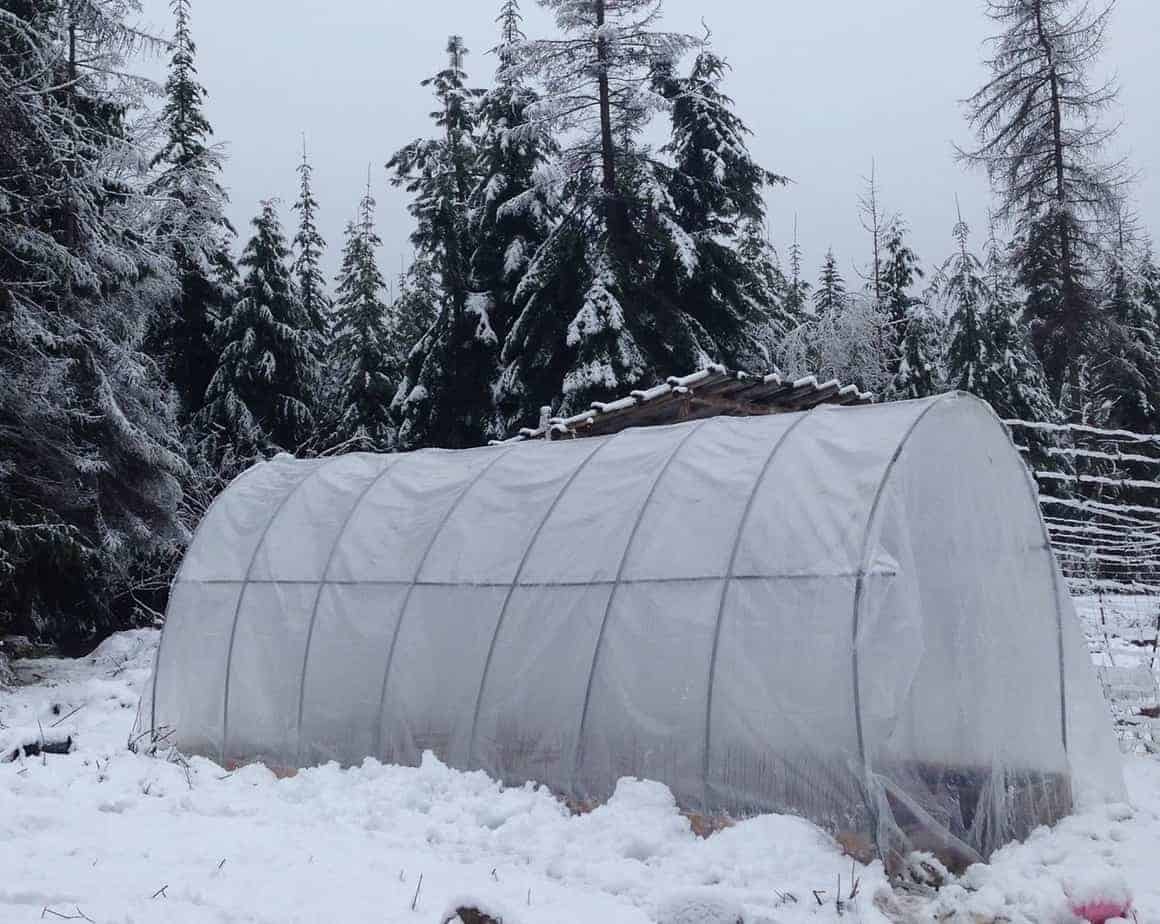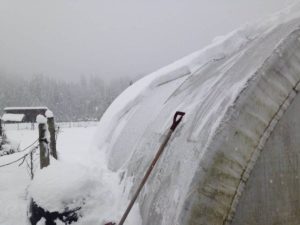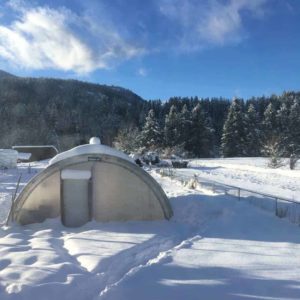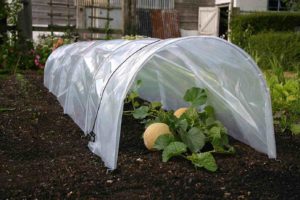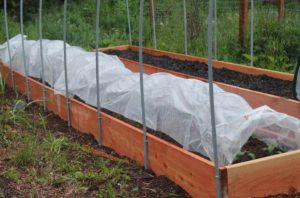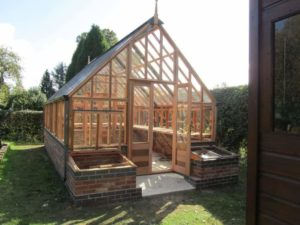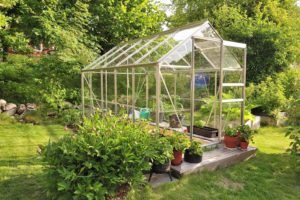A polytunnel (hoop greenhouse) is great for gardeners that can’t afford a real greenhouse.
We built ours over 12 inch raised beds for about $600 including most of the soil. We built it using raised beds as a base, greenhouse plastic, and using grey PVC pipes as the frame.
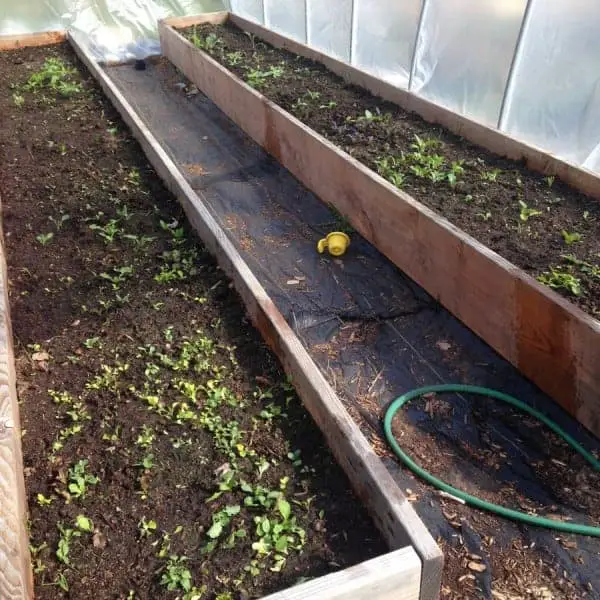
One bonus was that we didn’t have to worry about bending the grey pipes like the white pvc pipes with a pipe bender. Ours were attached in the middle with a connector and the first year it was an open polytunnel with sides and no end covers. The second year we added plastic on the ends and just lifted them for air flow. You can get more intricate with the design for better air flow. We used our polytunnel for 3 years before moving properties and gardening in a 20×20 foot year-round greenhouse.
In this post, I’ll discuss the pros and cons of polytunnel greenhouse gardening
Polytunnel Greenhouse Pros
Polytunnels are a great way to add extra heat to summer warm season crops like tomatoes, peppers, eggplants & melons. It was after we had 5 weeks of rain one summer that we decided to build a polytunnel in the first place to protect our warm season crops.
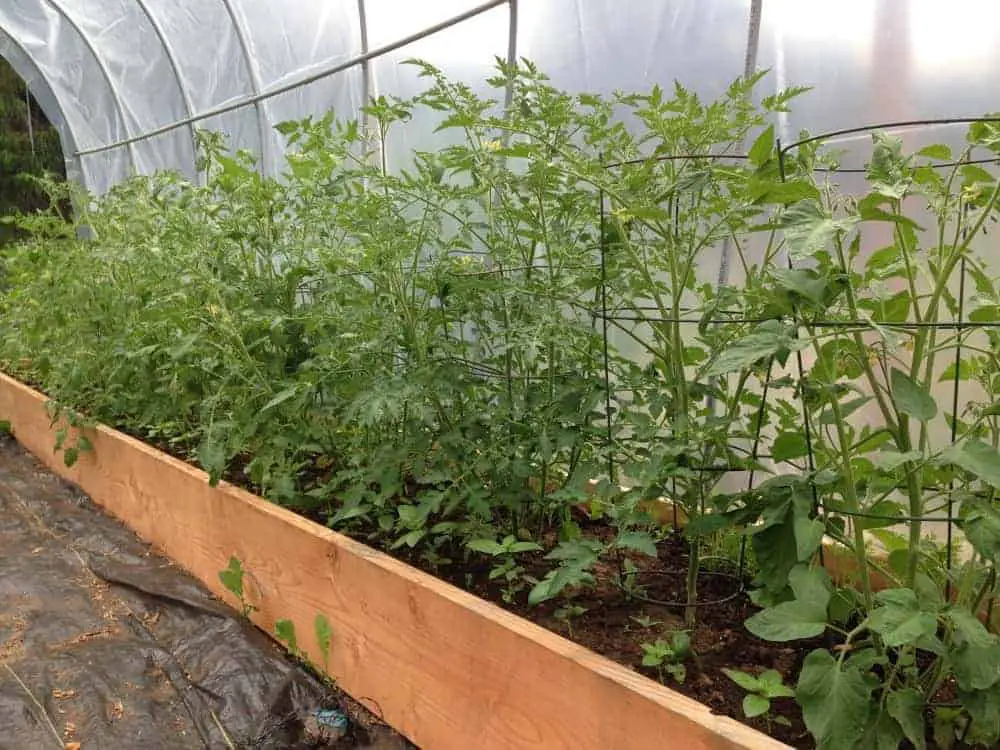
Using a polytunnel during the summer is a great way to add extra heat and protect your crops from excessive rain. If you live in a short season climate, that extra heat also means your crops have a better chance of ripening summer crops on the vine.
A major benefit of gardening with a polytunnel is that you can create a controlled environment without the higher cost of a greenhouse.
Polytunnel Greenhouse Cons
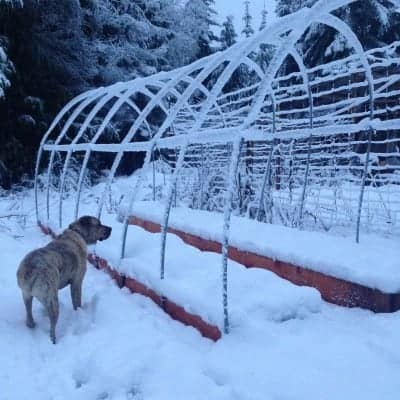 The major drawback, other than the initial cost, is if you get a lot of snow. A polytunnel frame won’t be able to handle heavy, or even light, loads of snow.
The major drawback, other than the initial cost, is if you get a lot of snow. A polytunnel frame won’t be able to handle heavy, or even light, loads of snow.
During the winter months we removed the cover.
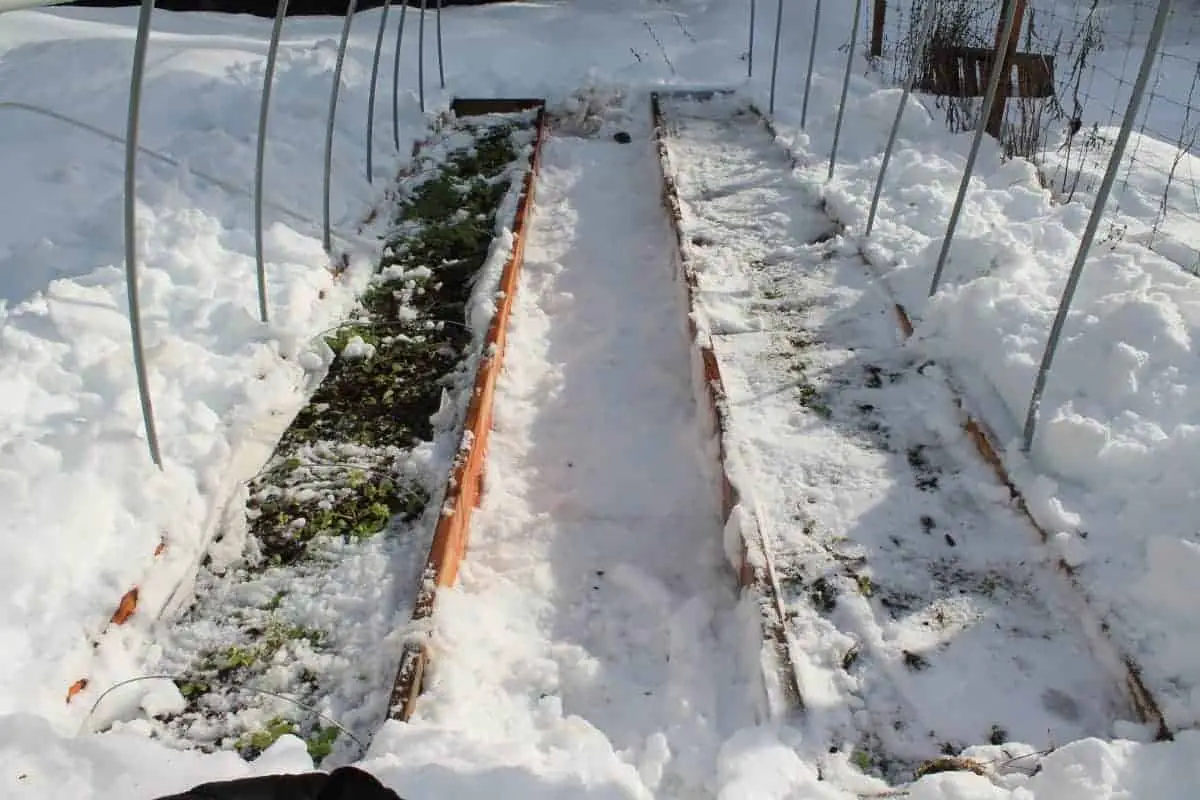
We would keep our large cover up until mid-December before the heavy snow hit us. In the photo of our polytunnel in the snow, we had set it up for early spring planting then had an unfortunate late spring dump of snow in March. Our polytunnel caved inwards in the night, but surprisingly, the plastic cover and structure didn’t break.
During the springtime we another mini hoop tunnel inside our polytunnel to add extra heat for fall and spring season extending.
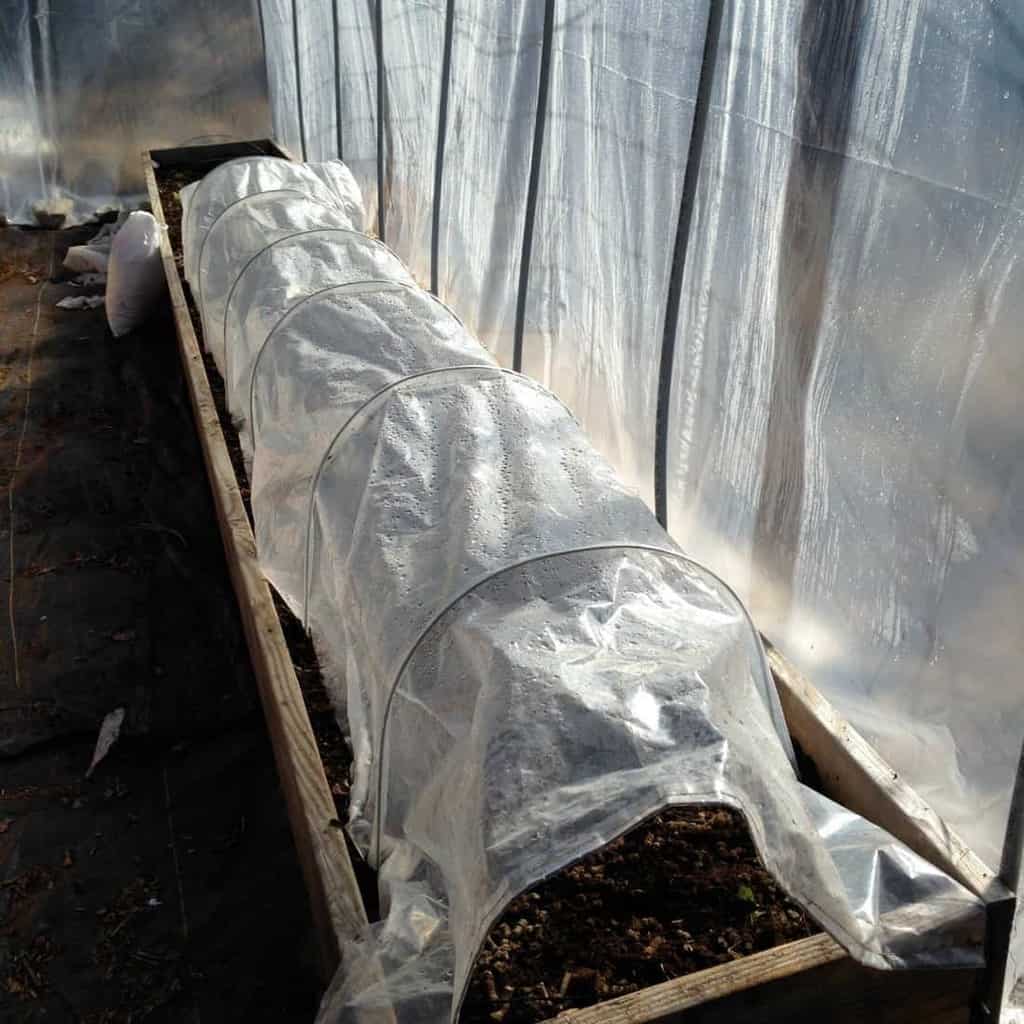
This gave us a head start on warming up the soil for spring planting.
We often used mini hoop tunnels before or after removing the larger polytunnel cover.
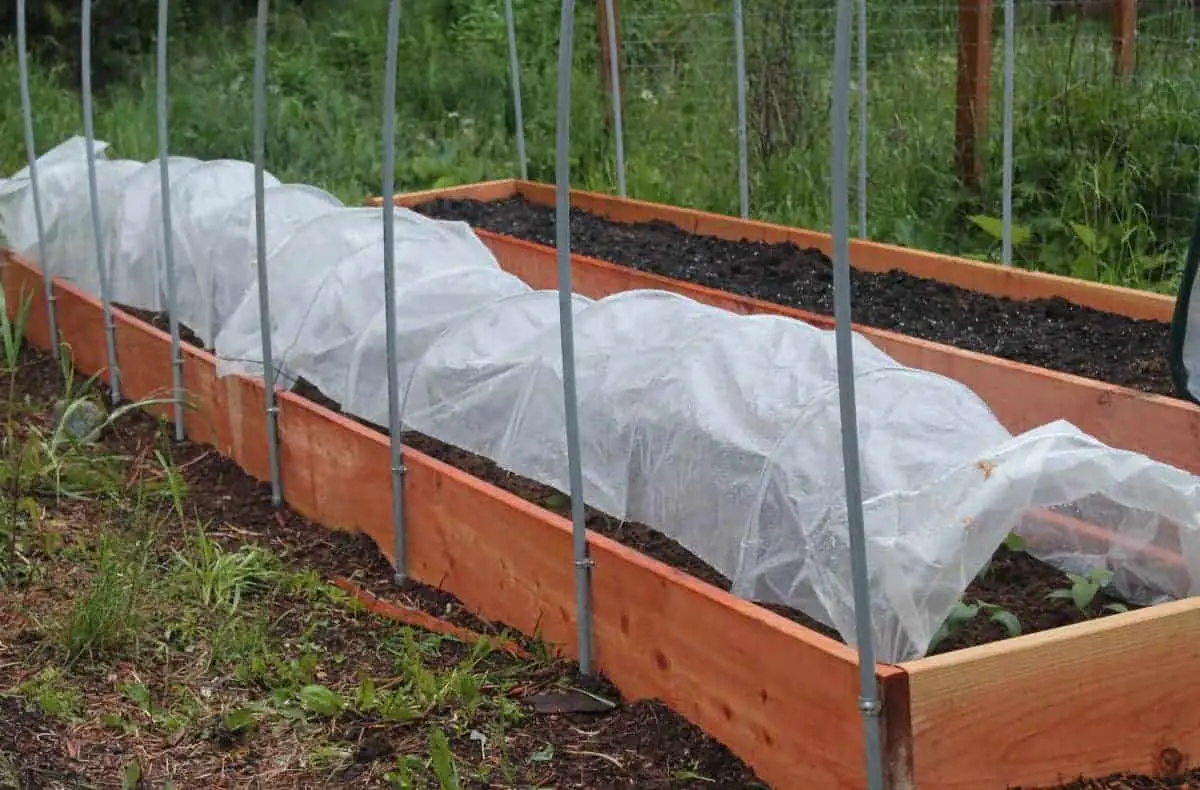
Will a polytunnel greenhouse work for you?
That depends on your climate, gardening goals and budget. Even though I prefer our greenhouse gardening, I really loved the experience of using a polytunnel in the garden.

